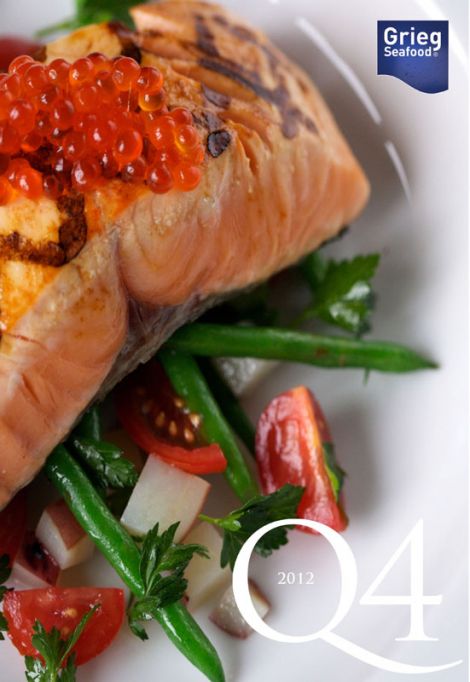News / Hjaltland profits hit by salmon diseases
HIGH LEVELS of sea lice and the discovery of Amoebic Gill Disease (AGD) in farmed salmon have had a serious impact on the performance of one of Shetland’s largest seafood producers.
Grieg Seafood Hjaltland, based in Lerwick, had to write down £5.7 million (48.6 NOK) on the value of its stock in the fourth quarter of last year.
The board of the mother company, Grieg Seafood, has expressed its displeasure with the situation in its latest quarterly report, published on Friday.
They said profitability of its Shetland was down due to mortality rates.
The language used in the document is another indication of the seriousness of the challenge the local salmon farming industry faces.
The GSF Hjaltland report said: “In Shetland, both the results and the biological development have been very weak and the board of directors is not satisfied with the operational development in the region.
“Amoebic Gill Disease (AGD) was identified in Shetland in the third quarter of 2012.
“The combination of AGD and a challenging salmon lice situation has made the biological situation in Shetland especially demanding. In progressive levels of AGD the risk associated with the treatment of AGD/lice is very high.
“In the fourth quarter of 2012 Grieg Seafood Hjaltland recorded an extraordinarily high mortality rate among large fish in connection with treatment of this kind in one of the company’s biggest production areas. This has also resulted in a reduction in harvested volumes.”
Last month, the manager of local trades body Shetland Aquaculture, David Sandison, admitted that the scale of the problem was significant, but added it should not be described as a crisis.
A co-ordinated response which will see the pre-emptive treatment of every site in Shetland is now under way.
Local Grieg Seafood director Michael Stark did not respond to a request for interview on Friday.
Become a member of Shetland News
However, the director’s quarterly report said that a new strategy of how to combat sea lice had been agreed.
“The steps taken to deal with salmon lice are based on corresponding practice and strategies in Norway,” the report said.
Meanwhile, the company’s new £3.8 million smolt hatchery, currently being built at Girlsta, is expected to be completed in the first half of this year.
Become a member of Shetland News
Shetland News is asking its readers to consider paying for membership to get additional perks:
- Removal of third-party ads;
- Bookmark posts to read later;
- Exclusive curated weekly newsletter;
- Hide membership messages;
- Comments open for discussion.
If you appreciate what we do and feel strongly about impartial local journalism, then please become a member of Shetland News by either making a single payment, or setting up a monthly, quarterly or yearly subscription.



























































